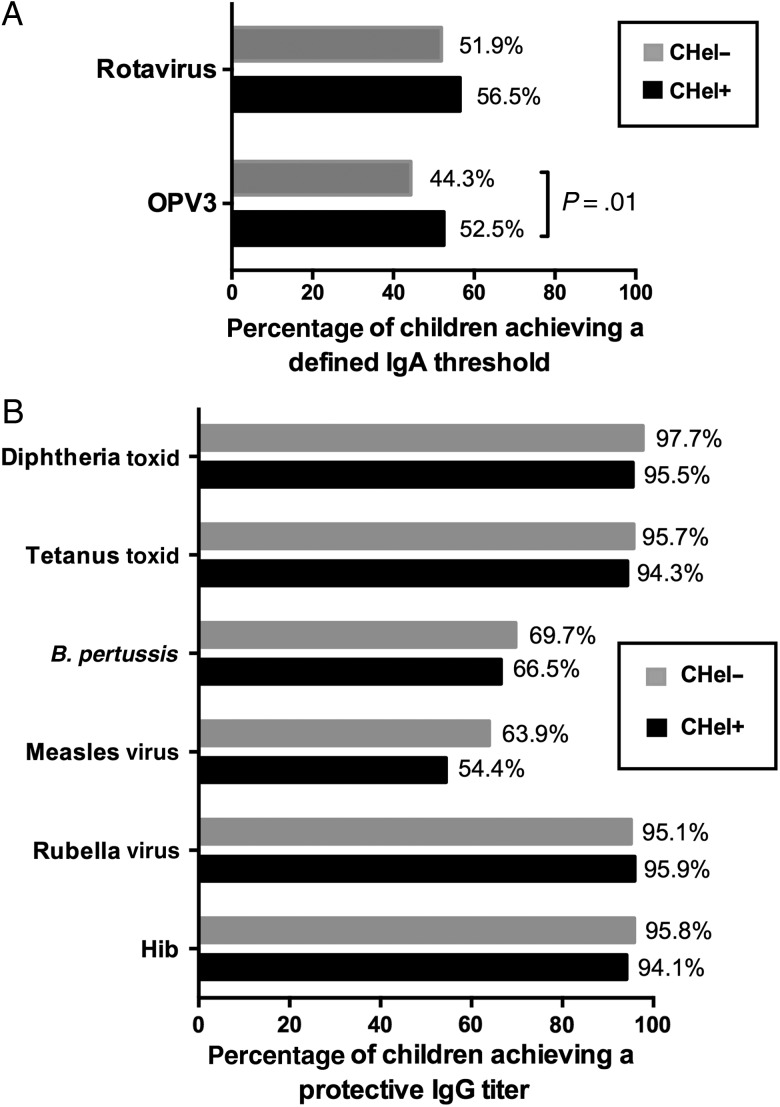Figure 4.
Percentage of children of mothers with helminth infection (CHel+) and children of mothers without helminth infection (CHel-) achieving a defined threshold of vaccine-specific plasma antibody titers at 13 months of age. A, Primary end points: the orally administered vaccines. The threshold for antirotavirus immunoglobulin A (IgA) titer was defined as 20 U/mL, the titer often used as a cutoff in rotavirus-specific enzyme-linked immunosorbent assays. The threshold for anti–poliovirus serotype 3 (OPV3) IgA titer was defined as 3100 mIU/mL, the titer at which the sensitivity and specificity were highest, as determined by a receiver operating characteristic curve. B, Secondary end points: the parenterally administered vaccines. The thresholds for vaccine-specific immunoglobulin G (IgG) titers were as follows: anti–diphtheria toxoid, 10 mIU/mL; anti–tetanus toxoid, 10 mIU/mL; anti–Bordetella pertussis, 5 IU/mL; anti–measles virus, 120 mIU/mL; anti–rubella virus, 15 mIU/mL; and anti–Haemophilus influenzae b (Hib), 150 ng/mL. These titers were chosen because they are considered to be correlates or surrogates of protection [19].

